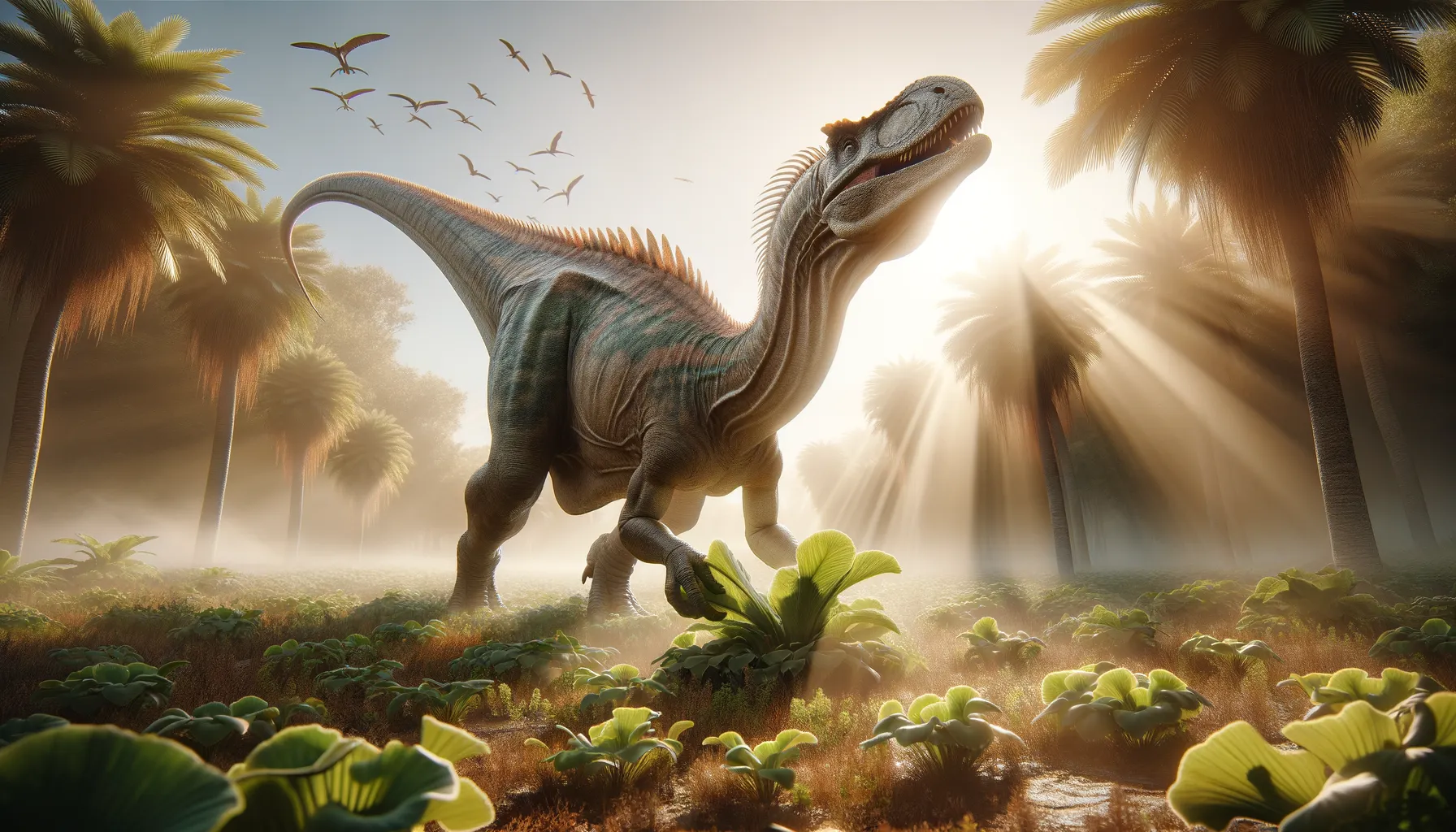
Camptonotus
Jurassic giant with a long legacy.
Period
Jurassic
Length
Around 30 feet long.
Height
About 10 feet tall at the hips.
Weight
Approximately 1.5 to 3 tons.
This herbivorous dinosaur had a bulky body and moved slowly, feeding mainly on low-lying plants. Known for its distinct small head and long neck, it likely roamed in herds for protection. Fossils of this species have provided important insights into the ecosystem of the Jurassic period, emphasizing its role as both prey and a mobile plant-eater.
Diet
It was herbivorous, feeding on ferns and other low-lying vegetation. Its flat teeth were ideal for grinding plant material.
Hunting
This dinosaur did not hunt as it was a plant-eater. Instead, it likely foraged for food in lush, dense forests.
Environmental challenges
Throughout its life, it faced predation from larger carnivorous dinosaurs. Seasonal changes could also have affected food availability, requiring it to move to find sustenance. Climate variations might have influenced its migratory patterns.
Speed
Relatively slow compared to predators.
Lifespan
Estimated to be around 30 years.
First discovery
Discovered in the 19th century in North America.
Fun Facts
- Camptonotus was originally the name given to a dinosaur that we now know as Camptosaurus, due to a naming conflict with an insect.
- Camptosaurus, once called Camptonotus, lived during the Late Jurassic period, around 150 million years ago.
- This dinosaur was a herbivore, mainly feeding on plants and leaves in its lush, green environment.
- Camptosaurus had strong hind legs, which suggests it could run quickly, possibly to escape predators.
- The name Camptosaurus means 'bent lizard', referring to its curved body.
- Fossils of Camptosaurus have been found in North America, particularly in areas like Colorado and Utah.
- Camptosaurus was a medium-sized dinosaur, reaching lengths of about 16 to 23 feet.
Growth and Development
It likely grew rapidly in its early years to avoid being prey. This growth would have slowed down as it reached maturity, allowing it to conserve energy. Younger dinosaurs may have stayed close to adults for protection.
Habitat
It lived in rich, vegetative environments such as forests and floodplains. These areas provided ample food and cover from predators. Water sources were likely abundant, ensuring sustained survival.
Interaction with other species
It coexisted with other herbivores, often competing for similar food resources. Mutualistic relationships with smaller species might have helped in removing parasites. Predator presence was a constant threat.
Natural lifespan
It could live up to 30 years in the wild.
Reproduction
Reproduction was likely oviparous, with eggs laid in nests. Parental care might have included guarding the nest but not extensive protection after hatching. Juvenile survival depended greatly on avoiding predators.
Social behaviour
It may have lived in groups, which provided safety in numbers. Herding behavior helped in recognizing and escaping threats quickly. Social interactions were likely simple, driven by survival and reproduction.
Fossil locations
Fossils have been predominantly found in North America, particularly in areas known for rich Jurassic deposits. These locations have yielded significant information contributing to understanding its ecosystem. Ongoing excavations continue to uncover more about its distribution.
